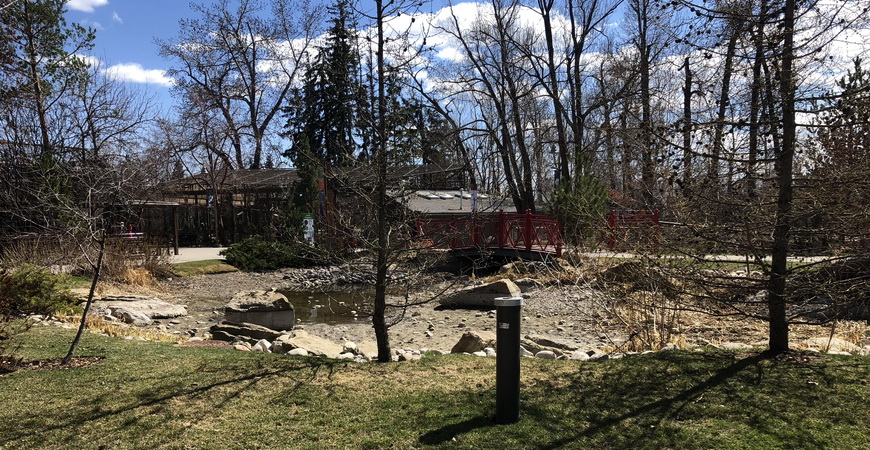Calgary Zoo’s flood mitigation pumping system is a key component of the City of Calgary’s Flood Resilience Plan
July 8, 2022

In June 2013, the City of Calgary experienced the worst flooding in its history, resulting in billions of dollars of damage, including over $50 million of damage to the Calgary Zoo, located on St. George’s Island in the Bow River. ISL Engineering and Land Services engaged Associated Engineering as a key partner to develop the Zoo’s flood mitigation system, a sheet pile cofferdam wall, watertight barrier, and pumping system. Our Environmental Division, Associated Environmental Consultants, provided essential hydrogeological services for the project.
To provide a clear understanding of the highly complex island hydrogeology, we developed a state-of-the-art, 3D numerical model that allowed us to analyze the combined effects of the river flood hydrograph, the number of wells, their locations, and pumping rates throughout the design. The model was infinitely more important in construction, since it then allowed us to measure the effectiveness of the cut-off wall, and the pump performance, which would confirm the level of flood protection provided by the system. A flexible, risk-informed design helped mitigate the ‘known unknowns’ and optimize the final system’s performance.
Simplicity and reliability of system integration and automation into Zoo operations were priorities. We provided Zoo operators with a familiar interactive interface to remotely monitor performance of the system and groundwater levels across the island in real time from their central control room.
Preservation of the Calgary Zoo, the City’s first developed park space, sensitive riparian habitat, mature trees, and native vegetation were key factors in selecting the least invasive and most effect flood mitigation solution. Restoration of essential riparian edges between the riverbank and sheet pile wall returned the site to its natural pre-development condition.
Upstream mitigation that includes the Springbank off-stream reservoir on the Elbow River, modified operation of existing reservoirs on the Bow River, as well as a future reservoir, will provide greater protection against less frequent events.
Neal Barretto, Environmental Scientist, tells us, “The numerical model used for the planning stage of the dewatering systems is unique. Research indicated that few groundwater/surface water interaction modelling was completed at such a small scale for an island within a river.” Additionally, the sheet pile walls were introduced into the model using vertical no flow boundaries and hydraulic permeability of the base bedrock layer adjusted to allow for percentage leakage resulting due to connections between the sheet pile plate sections.
Given the uncertainties of climate change, the Zoo’s flood protection is designed to be easily adaptable by either raising perimeter wall heights or modifying pumping rates. Neal says, “By investing money up front in adding more monitoring pieces to the whole system, the Zoo will save money in the future as we will be able to fine tune the pumping system. This will reduce the operating cost of the pump and prolong the lifecycle of the pumping system.”
Ongoing monitoring provides assurance of dewatering system’s performance
Since the project completion in 2018, Associated Environmental has worked with the City of Calgary and the Calgary Zoo to provide support for the Zoo’s dewatering system, and upgrade the passive monitoring system to improve its ease of use and cost-effectiveness. We also oversee the monitoring of systems and the pumping system operations and performance. In 2022, we will complete a detailed well inspection as part of the five-year inspection program.

In June, using the monitoring system, we were able to see the strength of the pumping system during a heavy rainfall event. The event caused minor flooding in parts of Calgary, but not at the zoo, where monitoring results showed that the water levels were stable. It was the first time the dewatering system was ‘stressed’, as Calgary and the surrounding area experienced high rainfall.
Our key personnel on this project include Neal Barretto, Robin Clee, Cory Lukacs, Corinne Arkell, Joe White, and Scott Witzke.






